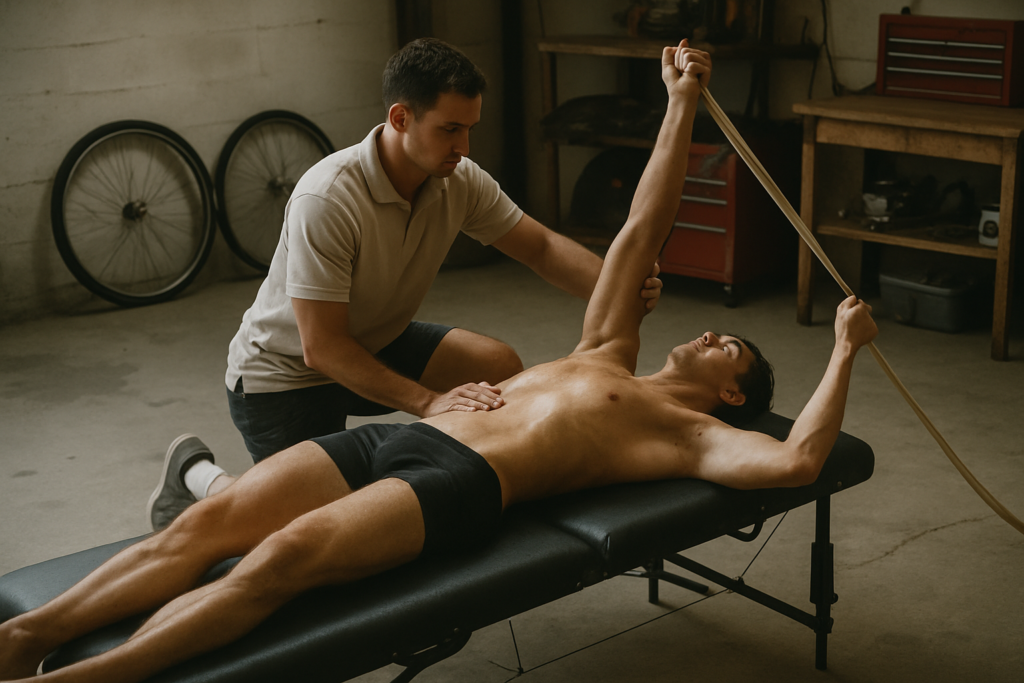If you’re like many men, you might wonder which prostate problem you’re most likely to face as you get older. Benign prostatic hyperplasia (BPH), or an enlarged prostate, is the most common prostate issue affecting men, especially past the age of 50. This condition can cause you to pee more often, have a weak stream, or feel like you can’t empty your bladder.
Understanding how to spot signs early and what steps you can take is important. There are simple ways to manage BPH and other prostate concerns, such as making healthy lifestyle choices or following advice from helpful resources like the All About The Prostate” book by Ben’s Natural Health or other important sources, which will cover natural steps and action plans.
It can be easy to overlook or ignore changes in how you feel or use the bathroom, but taking small steps now can make a big difference. Learning about the most common prostate problems and what you can do about them may help you stay healthy and worry less in the future.
Key Takeaways
- BPH is the most common prostate problem for men.
- Simple actions and lifestyle changes can help.
- Early knowledge and resources make a difference.
The Most Common Prostate Problem in Men
The most common prostate issue in men is benign prostatic hyperplasia (BPH), also called an enlarged prostate. This condition often causes problems with urination and can impact your day-to-day life.
Understanding Benign Prostatic Hyperplasia
Benign prostatic hyperplasia is when the prostate gland becomes larger as you age. The prostate sits below your bladder and surrounds the urethra, which is the tube that carries urine out of your body. As the prostate grows, it can squeeze the urethra and block the flow of urine.
BPH is not cancer and does not increase your chance of getting prostate cancer. The reason the prostate gets bigger is thought to be linked to changes in hormones as men age. Most men will notice some degree of prostate growth after age 50.
When the prostate enlarges, it puts pressure on your bladder and urethra. This pressure makes it harder to start urinating and can cause weak flow or dribbling. Over time, BPH can make bladder control worse and raise your risk of bladder stones or urinary tract infections.
Key Symptoms and Warning Signs
The signs of an enlarged prostate develop slowly. Many men first notice they have to urinate more often, especially at night. This is called nocturia and often interrupts sleep.
Other common symptoms include:
- Difficulty starting urination
- Weak or slow urine flow
- A feeling that you cannot fully empty your bladder
- Dribbling at the end of urination
- Sudden urge to urinate
Some men may also experience pain or burning when urinating if they develop a urinary tract infection. The symptoms can get worse over time if BPH is not managed. If you ever see blood in your urine or cannot urinate at all, see a doctor right away.
Risk Factors and Who Is Affected
Benign prostatic hyperplasia mainly affects older men. By age 60, about half of men have some prostate enlargement. By age 85, up to 90% of men show symptoms.
Certain factors make BPH more likely:
- Age: The risk goes up as you get older.
- Family history: If other men in your family have BPH, your chances are higher.
- Health conditions: Heart disease, diabetes, and obesity are linked to higher risk.
- Lifestyle: Lack of physical activity may play a part.
BPH does not usually affect younger men. Most symptoms show up after age 50 and slowly get worse as the prostate continues to grow. Regular checkups may help spot changes in the prostate gland before severe problems develop.
What to Do About Prostate Problems
Knowing how prostate problems are found and managed can help you feel more in control of your health. There are different ways to check prostate health, treat conditions, and support a healthy prostate over time.
Diagnosis and Prostate Screening Methods
To check for prostate problems, doctors use a few key tools. A digital rectal exam (DRE) is a simple test where the doctor feels your prostate through the wall of your rectum to detect swelling or lumps. Most men find this quick, though it may feel a bit uncomfortable.
Another common method is the prostate-specific antigen (PSA) blood test. High PSA levels can suggest an issue like inflammation, an enlarged prostate, or even cancer, but it is not a perfect test and can sometimes give false alarms.
Doctors may also order urine tests or ultrasound imaging if you have symptoms like frequent or weak urination. If cancer is suspected, a biopsy of prostate tissue may be needed. Talk openly with your doctor about any symptoms and family history to help choose the safest screening plan for you.
Effective Treatment and Management Options
Treatment for prostate problems depends on what is causing your symptoms. For benign prostatic hyperplasia (BPH), or an enlarged prostate, medical options often start with medicines like alpha-blockers that relax muscles to help you urinate more easily. Sometimes, drugs that shrink the prostate are used.
If prostate cancer is found, the best cancer treatment in singapore depends on your age, health, and how advanced the cancer is. Options range from observation for slow-growing cancer, to surgery (prostatectomy), radiation therapy, hormone therapy, or chemotherapy. Each comes with different benefits and risks.
Bacterial prostatitis, which is inflammation caused by infection, is usually treated with antibiotics. Your doctor might also prescribe medicines that help with pain or urination symptoms. Following the full course of antibiotics is important to clear the infection.
Promoting Long-Term Prostate Health
There are healthy habits you can adopt to support your prostate. Eat a balanced diet with plenty of fruits and vegetables, and limit foods high in saturated fat.
Stay active through regular exercise to help keep your weight in a healthy range. Obesity and lack of movement may increase the chance of prostate problems.
If you smoke, try to quit, and limit your alcohol intake. Maintain good bathroom habits and hygiene as well.
Schedule regular checkups so your doctor can watch for any warning signs early. Be open about any problems with urination or pain, and keep track of changes in your health. This makes it easier to spot and treat prostate issues before they get worse.
Conclusion
You are most likely to develop benign prostatic hyperplasia (BPH) as you get older. This usually means your prostate gets larger, which can lead to urinary symptoms such as trouble starting or stopping urine and needing to go more often.
Pay attention to signs like a weak urine stream, pain, or blood in your urine. If you notice these symptoms, don’t wait to speak with your healthcare provider.
Simple steps may help:
- Make healthy food choices
- Stay active
- Get regular checkups
- Report any changes or symptoms early
Early action and regular care make a big difference in managing prostate problems. Don’t ignore symptoms—your health is worth your attention.


 is a passionate advocate for fitness and healthy living, blending her expertise in swimming with a dedication to overall wellness. With years of experience both in and out of the pool, she offers valuable insights on effective workout routines, nutrition, and lifestyle habits that support peak performance and vitality. Rosamie’s writing is characterized by its practical advice, encouraging readers to adopt sustainable habits for long-term health and fitness. She frequently shares her personal journey and success stories to motivate others, and her articles often include actionable tips that readers can easily incorporate into their daily lives. By focusing on a holistic approach to fitness, Rosamie aims to help individuals not only achieve their athletic goals but also cultivate a balanced and fulfilling lifestyle.
is a passionate advocate for fitness and healthy living, blending her expertise in swimming with a dedication to overall wellness. With years of experience both in and out of the pool, she offers valuable insights on effective workout routines, nutrition, and lifestyle habits that support peak performance and vitality. Rosamie’s writing is characterized by its practical advice, encouraging readers to adopt sustainable habits for long-term health and fitness. She frequently shares her personal journey and success stories to motivate others, and her articles often include actionable tips that readers can easily incorporate into their daily lives. By focusing on a holistic approach to fitness, Rosamie aims to help individuals not only achieve their athletic goals but also cultivate a balanced and fulfilling lifestyle.
